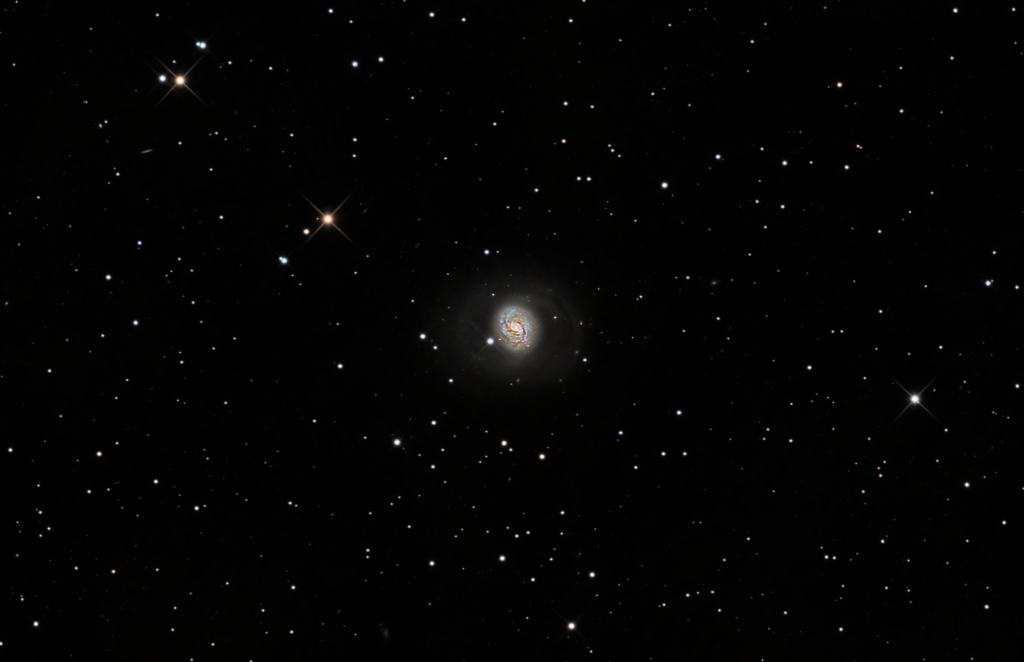M77
Click image for full size version
November 7, 2013
What with the moon, clouds, rain and wind, it’s been pretty tough to get a clear sky lately! I’ve been acquiring the data for this shot for over a month. Luckily, it was clear on Sunday night just before I had to travel for work this week, and I was able to finish this and start another image, and had time to process this image in my hotel. This is M77, the 77th catalogue entry in Charles Messier’s list of fuzzy objects that he came across while comet hunting (although Messier learned about this object from Pierre Mechain who discovered it in 1780). M77 is a barred spiral galaxy located nearly 50 million light years away. The bar runs from upper left to lower right of the galaxy. The centre of this galaxy is emitting lots of energy, making M77 an “Active Galaxy” with an “Active Galactic Nucleus.” This likely indicates a huge black hole at the centre of the galaxy. There are a few other galaxies scattered around the image, including an edge-on sliver of light in the upper left corner, a little fuzz ball at bottom just left of centre, and a couple of galaxies that seem embedded in the halo of M77.
Clouds in the forecast, but hopefully it will clear soon… before the moon comes back… and I’ll be able to finish the other galaxy that I have started!
Tekkies:
SBIG STL-11000M camera, Baader LRGB filters, 10″ f/6.8 ASA astrograph, Paramount MX. Guided with STL-11000’s internal guider. Acquistion, guiding, calibration, registration and integration all done using Maxim-DL. All other processing in PixInsight. Shot from my SkyShed in Guelph, Ontario. No moon. Average to very good transparency and good seeing.
49x10m L, and 12x5m R, 9x5m G and 10x5m B unbinned frames (total=10hr45m).
The R, G and B files produced in MaximDL were each background-corrected with DynamicBackgroundExtraction, registered and combined into an RGB image in in PixInsight. The RGB was processed with background neutralization, colour calibration, histogram stretch, and saturation adjustment. The luminance was processed with Dynamic Background Extraction, deconvolution, histogram stretch and TGV noise. LinearFit and Lab channel Combination were used to match the luminance of the RGB to the L. The L and RGB images were then registered and the L applied to the RGB using LRGBCombine in PixInsight. HDRMultiscaleTransform was used at 5 and 3 pixel scales on the core of the galaxy, followed by Exponential Transpformation on the same region. Contrast and saturation were adjusted using curves. Unsharp mask was applied to the core of the galaxy followed by a slight gaussian blur. Image scale is about 1.1 arc sec per pixel.







Leave A Comment